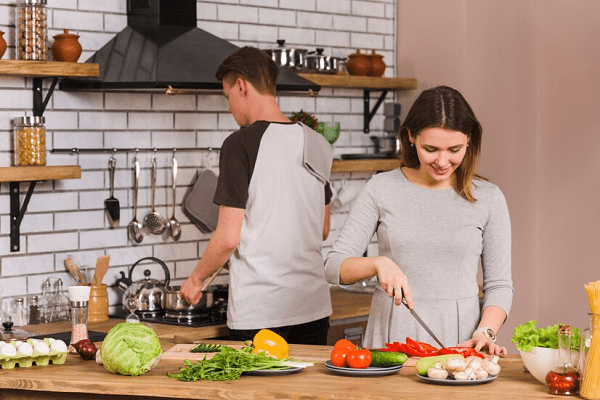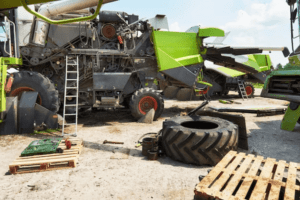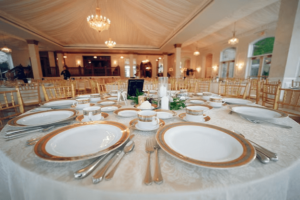Changes taking place during cooking- Cooking is a complex process that involves various physical and chemical changes in food. These changes can transform raw ingredients into a delicious and safe-to-eat meal. Here are some of the most common changes that take place during cooking:
- Heat Transfer: The primary driver of cooking is the transfer of heat from a heat source (such as a stove, oven, or microwave) to the food. This heat energy raises the temperature of the food, which in turn initiates various changes.
- Denaturation of Proteins: Proteins in food, such as those found in meat and eggs, undergo denaturation when exposed to heat. This process involves the unfolding of protein molecules, which changes their structure and texture. For example, when you cook an egg, the clear egg white transforms from a liquid to a solid due to protein denaturation.
- Maillard Reaction: The Maillard reaction is a chemical reaction between amino acids (from proteins) and reducing sugars that occurs at high temperatures. It gives food its characteristic brown color and creates complex flavor compounds, enhancing the taste of cooked food. It’s responsible for the browning of bread crusts, seared meat, and roasted coffee beans.
- Caramelization: Caramelization is a process that occurs when sugars are heated, leading to the browning and development of new flavors. This is commonly seen when cooking foods like onions, where the sugars in the onions become caramelized, creating a sweet and savory flavor.
- Gelatinization of Starches: Starches found in foods like rice, pasta, and potatoes absorb water and swell when exposed to heat. This process is called gelatinization and leads to the softening of these foods and the development of a pleasing texture.
- Evaporation and Water Loss: Cooking often involves the evaporation of water from food. This leads to the concentration of flavors, as well as changes in the texture of the food. For example, a reduction in sauce thickness is achieved by simmering and evaporating excess liquid.
- Vaporization of Volatile Compounds: Some volatile compounds in food, like those responsible for aroma and flavor, can be lost during cooking due to vaporization. This is why the smell of food cooking is so enticing, as it carries these aromatic compounds into the air.
- Emulsification: In cooking techniques like making sauces or salad dressings, emulsification occurs when two immiscible liquids (like oil and vinegar) are combined and stabilized by an emulsifying agent (like egg yolk or mustard). This creates a stable mixture with a uniform texture.
- Leavening: In baking, leavening agents like yeast, baking soda, or baking powder produce gases (carbon dioxide) when exposed to heat. These gases cause the dough or batter to rise, resulting in light and fluffy baked goods.
- Reduction of Harmful Microorganisms: Cooking also serves as a means of making food safe to eat by killing or deactivating harmful microorganisms like bacteria and parasites.
Understanding these changes that take place during cooking is essential for chefs and home cooks alike, as it allows for better control over the final taste, texture, and safety of the prepared food.
What is Changes taking place during cooking
“Changes taking place during cooking” is a broad topic that encompasses various physical, chemical, and biological transformations that occur when food is subjected to heat or other cooking processes. Here’s a simplified explanation of some key changes that happen during cooking:
- Heat Transfer: Cooking primarily involves the transfer of heat to food. This increase in temperature affects the food’s chemical and physical properties.
- Protein Denaturation: The heat causes proteins in food to denature, leading to changes in texture and flavor. For example, the coagulation of egg whites when fried is a result of protein denaturation.
- Chemical Reactions: Cooking can initiate chemical reactions like the Maillard reaction and caramelization, which give rise to new flavors and browning in various foods.
- Water Evaporation: As food is heated, water content evaporates, leading to changes in moisture levels and concentration of flavors. This can result in foods becoming more concentrated and flavorful.
- Gelatinization of Starch: Starches in foods like pasta and potatoes absorb water and swell, causing them to become softer and more palatable.
- Texture Changes: The application of heat can cause food to undergo texture changes. For instance, frying can make food crispy on the outside, while boiling may lead to a softer texture.
- Emulsification: Cooking techniques can create emulsions, where immiscible liquids like oil and water are combined into a stable mixture, as seen in salad dressings.
- Leavening: In baking, leavening agents like yeast or baking powder create gases that cause dough to rise, resulting in a lighter and fluffier texture.
- Reduction of Harmful Microorganisms: Cooking kills or deactivates harmful microorganisms in food, making it safer to consume.
These changes vary depending on the type of food, cooking method, temperature, and time of cooking. Understanding these changes is essential for achieving desired culinary outcomes and ensuring food safety.
Who is Required Changes taking place during cooking
The changes that take place during cooking are typically required or desired for several reasons:
- Safety: Cooking helps kill harmful microorganisms like bacteria and parasites present in raw food, making it safe for consumption.
- Palatability: Cooking improves the taste, texture, and aroma of food. For example, the Maillard reaction and caramelization create appealing flavors and browning.
- Digestibility: Cooking breaks down complex molecules in food, making it easier for the body to digest and absorb nutrients.
- Texture Modification: Cooking can soften or tenderize foods, making them more enjoyable to eat.
- Enhanced Flavor: Cooking enhances the flavor of ingredients by concentrating their natural flavors and allowing them to blend together.
- Structural Changes: Cooking can transform the physical structure of food, turning liquids into gels (as with sauces and gravies) or causing bread to rise when baking.
- Cultural and Culinary Preferences: Different cuisines and culinary traditions have specific cooking techniques that are essential for creating traditional dishes.
In summary, the changes that occur during cooking are often necessary to make food safe, enjoyable, and culturally relevant. They improve the taste, texture, and overall quality of the food we consume.
When is Required Changes taking place during cooking

The changes that take place during cooking are required at various times depending on the specific cooking process and the type of food being prepared. Here are some common instances when these changes become necessary:
- Safety: Cooking is required to make food safe to eat. This includes heating food to temperatures that kill harmful bacteria, parasites, and other pathogens. The timing for this varies but generally involves heating food to a specific temperature for a certain duration, which can be determined based on food safety guidelines.
- Texture and Taste: Cooking is required to achieve the desired texture and taste of the food. For example:
- Boiling pasta is done until it reaches the desired level of tenderness.
- Grilling a steak is done for a specific duration to achieve the desired level of doneness (e.g., rare, medium, well-done).
- Baking bread is a process that involves multiple stages with specific timing to achieve the desired crust and crumb texture.
- Flavor Development: Cooking is needed to develop and enhance flavors. This includes processes like:
- Sautéing onions and garlic to release their aromatics.
- Roasting vegetables to bring out their natural sweetness.
- Allowing sauces and stews to simmer and meld flavors over time.
- Structural Changes: Certain cooking processes, like baking or frying, require changes in the structure of the food:
- Baking bread involves proofing and rising stages, each with specific timing requirements.
- Frying chicken requires cooking for a specific duration until it reaches a crispy and golden-brown texture.
- Cultural and Recipe-Specific Requirements: Many recipes and culinary traditions have specific timing requirements to achieve traditional and authentic flavors and textures. For example, slow-cooking a stew for several hours is a requirement in some cuisines.
- Leavening: In baking, timing is crucial for leavening agents like yeast or baking powder to release gases and cause the dough or batter to rise.
The timing of required changes during cooking can vary widely, so it’s essential to follow recipes and guidelines specific to the dish you’re preparing. Additionally, experience and experimentation can help you develop a sense of timing when cooking without relying solely on recipes.
Where is Required Changes taking place during cooking
The required changes during cooking take place within the food being cooked itself. These changes occur within the food’s structure and composition as it is subjected to heat and various cooking processes. Here’s where these changes happen:
- Within Food Ingredients: Cooking affects the chemical composition and physical structure of the ingredients used in a dish. For example:
- When you roast vegetables, the changes occur within the vegetables themselves as they soften, caramelize, and develop flavor.
- When you bake bread, the dough undergoes changes in texture and structure as it rises and forms a crust.
- In the Cooking Vessel or Appliance: Changes can also occur within the cooking vessel or appliance, especially when certain cooking methods are used:
- In a pressure cooker, changes in pressure and temperature inside the sealed container lead to faster cooking and changes in the texture and flavor of the ingredients.
- In a slow cooker, low and slow cooking over several hours allows flavors to develop within the pot.
- Within the Cooking Medium: In methods like frying and deep frying, changes take place within the cooking medium (usually oil) and in the food simultaneously:
- The food absorbs some of the oil, leading to changes in texture and flavor.
- The oil itself may undergo chemical changes as it heats, such as oxidation.
- In Mixtures and Combinations: When cooking involves combining different ingredients, changes occur within the mixture. For example:
- In sauces, such as a roux-based sauce, changes happen within the mixture of flour, fat, and liquid as it thickens and forms a sauce.
- In a stir-fry, various ingredients like vegetables and proteins cook together in a wok, each undergoing changes as they interact and heat up.
- Within the Food’s Cellular Structure: Cellular changes occur in food as it is cooked. For instance, when meat is grilled or roasted, the muscle fibers contract and release juices, leading to changes in texture and juiciness.
In summary, the required changes during cooking primarily take place within the food itself, but they can also involve the cooking vessel, medium, and the interactions between different ingredients. These changes are essential to transform raw ingredients into a finished, palatable dish.
How is Required Changes taking place during cooking
The required changes that take place during cooking happen through a combination of physical, chemical, and biological processes. These processes vary depending on the specific cooking method and the type of food being prepared. Here’s a general overview of how these changes occur:
- Heat Transfer: Cooking involves the application of heat to food, which is typically done through various heat sources such as stovetops, ovens, grills, or microwaves. Heat is transferred from the heat source to the food through conduction, convection, or radiation.
- Protein Denaturation: When exposed to heat, proteins in food denature, meaning their three-dimensional structure changes. This can cause proteins to unwind and coagulate. For example, when cooking meat, the heat causes muscle proteins to denature and contract, leading to the firming of the meat’s texture.
- Chemical Reactions: Cooking can initiate chemical reactions that result in the development of new flavors and colors. Two common examples are:
- Maillard Reaction: This reaction occurs when amino acids (from proteins) and reducing sugars react at high temperatures, leading to browning and the creation of complex flavors.
- Caramelization: When sugars are heated, they break down and undergo chemical changes, producing a range of caramel flavors and brown color.
- Water Evaporation: Heat causes water molecules in food to vaporize and escape as steam. This process can lead to the concentration of flavors as the remaining components become more concentrated.
- Gelatinization of Starch: Starches in food absorb water and swell when exposed to heat. This leads to thickening and the development of a desirable texture in dishes like sauces and gravies.
- Emulsification: Emulsification is the process of combining two immiscible substances, like oil and water, into a stable mixture. This is achieved through the addition of emulsifiers like egg yolks or mustard and vigorous mixing or blending.
- Leavening: In baking, leavening agents such as yeast or baking powder produce gases (usually carbon dioxide) when exposed to heat, leading to the expansion and rising of dough or batter.
- Texture Modification: Cooking can alter the texture of food by breaking down or softening its components. For instance, the application of heat can tenderize tough cuts of meat or soften vegetables.
- Microbial Inactivation: Cooking at specific temperatures for a sufficient duration can kill or deactivate harmful microorganisms present in raw food, ensuring food safety.
- Aromatics Release: Heat can release aromatic compounds present in ingredients like spices, herbs, and vegetables, contributing to the overall flavor of the dish.
- Time and Technique: The timing and cooking technique play a significant role in achieving the desired results. Different methods, temperatures, and durations are used to control the changes happening during cooking.
In summary, required changes during cooking occur through a combination of heat application, chemical reactions, physical transformations, and the manipulation of ingredients and techniques. The specific changes and their mechanisms depend on the cooking method and the desired outcome for the dish.
Case Study on Changes taking place during cooking
Spaghetti with Tomato Sauce
Ingredients:
- Dried spaghetti pasta
- Tomato sauce (made from tomatoes, onions, garlic, and various seasonings)
- Olive oil
- Fresh basil leaves
- Grated Parmesan cheese (optional)
Cooking Process:
- Boiling the Pasta:
- The dried spaghetti is placed in a pot of boiling water.
- As the pasta cooks, heat is transferred from the boiling water to the pasta through conduction.
- The high temperature causes the starches in the pasta to absorb water and swell, leading to gelatinization and a softening of the pasta’s texture.
- Cooking time is critical to achieving the desired level of doneness, ensuring that the pasta is al dente, or firm to the bite.
- Making the Tomato Sauce:
- In a separate pan, olive oil is heated, and finely chopped onions and garlic are sautéed.
- Sautéing initiates the release of aromatic compounds from the onions and garlic, enhancing the sauce’s flavor.
- Once the onions become translucent, the tomato sauce is added.
- As the sauce simmers, it undergoes several changes:
- Reduction: The sauce thickens as water content evaporates, concentrating flavors.
- Flavor development: The Maillard reaction and caramelization contribute to the sauce’s deep, rich flavor and color.
- Softening of vegetables: The heat causes the onions to soften further, and the tomatoes break down, forming a smooth sauce.
- Combining Pasta and Sauce:
- Once the spaghetti is cooked to al dente, it is drained, and a portion is added to the pan with the tomato sauce.
- The pasta is tossed in the sauce, allowing it to absorb the flavors of the sauce and attain the desired texture.
- Fresh basil leaves are torn and added for a burst of fresh aroma and flavor.
- Serving:
- The finished dish is served on plates.
- Grated Parmesan cheese can be added as a topping, enhancing the dish’s taste.
Changes During Cooking:
- Heat Transfer: Heat is applied to the pasta and sauce, causing them to absorb heat and cook.
- Starch Gelatinization: In the pasta, starches absorb water and swell, leading to a softening of texture.
- Aromatic Release: Sautéing onions and garlic releases aromatic compounds.
- Flavor Development: The sauce undergoes flavor-enhancing chemical reactions like the Maillard reaction and caramelization.
- Water Evaporation: Reduction of water in the sauce results in flavor concentration.
- Texture Modification: Pasta softens as it cooks and absorbs sauce, while the sauce thickens.
- Combination of Ingredients: Tossing the pasta in the sauce allows the flavors to meld.
- Aroma from Fresh Herbs: The addition of fresh basil leaves contributes a final burst of aroma.
- Optional Cheese Topping: Grated Parmesan cheese adds richness and umami flavor.
This case study illustrates how the changes that take place during cooking are crucial for creating a flavorful and satisfying dish. The proper timing and techniques in each step ensure that the ingredients undergo the necessary transformations to produce a delicious plate of spaghetti with tomato sauce.
White paper on Changes taking place during cooking
Title: Understanding Changes Taking Place During Cooking
Abstract:
- Brief summary of the importance of understanding cooking changes.
- Overview of key points covered in the white paper.
Table of Contents:
- Introduction
- Importance of cooking in human culture and nutrition.
- The significance of understanding cooking changes.
- Overview of key cooking processes.
- Physical Changes During Cooking
- Heat transfer mechanisms (conduction, convection, radiation).
- Effect of temperature on food texture.
- Gelatinization of starches.
- Protein denaturation.
- Water evaporation and its impact.
- Chemical Changes During Cooking
- Maillard reaction: Explanation and importance.
- Caramelization: Chemical processes and culinary applications.
- Lipid oxidation: Impact on flavor and health.
- Fermentation: Role in bread-making and fermentation of foods.
- Biological Changes During Cooking
- Microbial inactivation: Ensuring food safety.
- Enzymatic reactions: How heat affects enzymes in food.
- Nutrient retention and loss.
- Cooking Techniques and Methods
- Overview of various cooking methods (baking, grilling, sautéing, etc.).
- Temperature control and its influence on cooking outcomes.
- The role of timing in different cooking processes.
- Flavor Development and Aromatics
- Release of aromatics during cooking.
- Umami and its role in flavor enhancement.
- Culinary herbs and spices: Flavor extraction and pairing.
- Texture Modification
- The science of texture in cooking.
- Softening, tenderizing, and crisping of food.
- Achieving ideal texture in different dishes.
- Cultural and Culinary Significance
- Influence of regional cuisines on cooking techniques.
- Traditional and heritage cooking methods.
- Importance of timing in cultural cooking.
- Food Safety and Changes During Cooking
- Bacterial reduction and foodborne illness prevention.
- Temperature guidelines for safe cooking.
- Importance of accurate food thermometers.
- Conclusion
- Recap of key takeaways regarding changes during cooking.
- The art and science of cooking.
- Encouraging experimentation and culinary exploration.
- References
- Cite scientific studies, books, and authoritative sources on cooking and food science.
- Appendices (Optional)
- Additional resources, charts, or diagrams.
- Examples of recipes and cooking techniques.
A comprehensive white paper on changes during cooking would provide a valuable resource for culinary professionals, food scientists, and enthusiasts looking to deepen their understanding of the science and art of cooking. It would explore the transformations that occur during various cooking processes and their significance in achieving safe, delicious, and culturally relevant dishes.





